10 Habits for Keeping Off Fat Forever
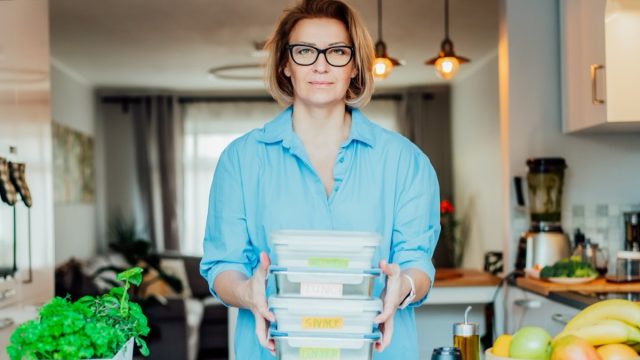
Losing weight in today's world is difficult for many reasons. Food—especially unhealthy food—is available 24/7, and we are living increasingly sedentary lives. According to the NIH, nearly 1 in 3 adults are obese. That doesn't mean losing weight, specifically fat, is impossible. It just means we have to work a little bit harder to build healthy, sustainable, long-term habits to not only burn fat but keep it off forever. Here are ten scientifically-backed methods of torching fat, according to the experts.
Live An Active Lifestyle

This is about more than hitting the gym—try fitting physical activity into as many parts of your day as possible. Take the stairs, park further away from the grocery store entrance, even try a standing desk. Sitting too much is incredibly bad for our health. "The impact of movement — even leisurely movement — can be profound," Edward R. Laskowski, MD, tells the Mayo Clinic. "For starters, you'll burn more calories. This might lead to weight loss and increased energy. Also, physical activity helps maintain muscle tone, your ability to move and your mental well-being, especially as you age."
Prioritize Your Sleep

Getting at least 7 hours of sleep every night is crucial for long-term weight loss and maintenance. "There is mounting evidence that people who get too little sleep have a higher risk of weight gain and obesity than people who get seven to eight hours of sleep a night," says the Harvard T.H. Chan School of Public Health. "People who don't get enough sleep are more tired during the day, and as a result may curb their physical activity."
Eat Your Veggies
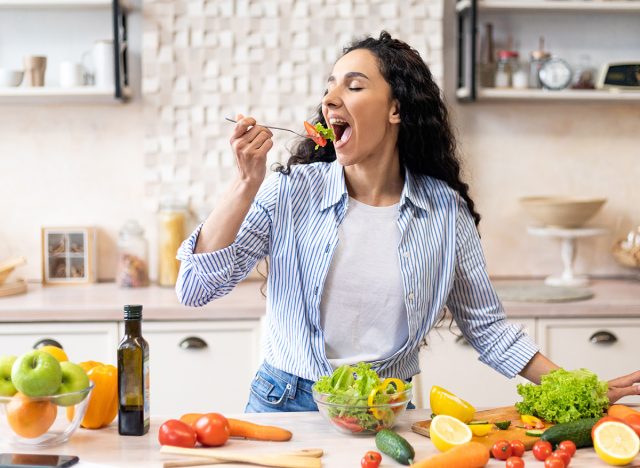
"Foods that contain a high amount of fiber without a corresponding spike in blood sugar are ideal for satiation," Dr. Shaun Kennedy, ND, tells Sonoran University of Health Sciences. "Your best bet is to stick with foods that have a high level of micronutrients to accompany the fiber-like kale, spinach, arugula, watercress, broccoli, and cauliflower, as examples. These types of vegetables are ideal for weight loss because when eaten in large quantities they can help to activate the stretch receptors in your stomach that will tell your brain you're full."
Track Calories
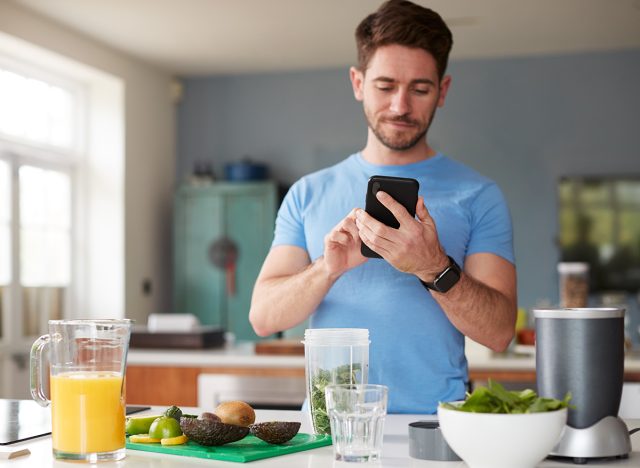
Understanding the calorie count of the foods you eat every day will help with long-term weight maintenance. "In general, if you cut about 500 calories a day from your usual diet, you may lose about ½ to 1 pound a week," says the Mayo Clinic. "But this can vary depending on your body, how much weight you want to lose, your gender, and activity level." You can benchmark your progress with this useful Lean Body Mass Calculator.
Lift Weights
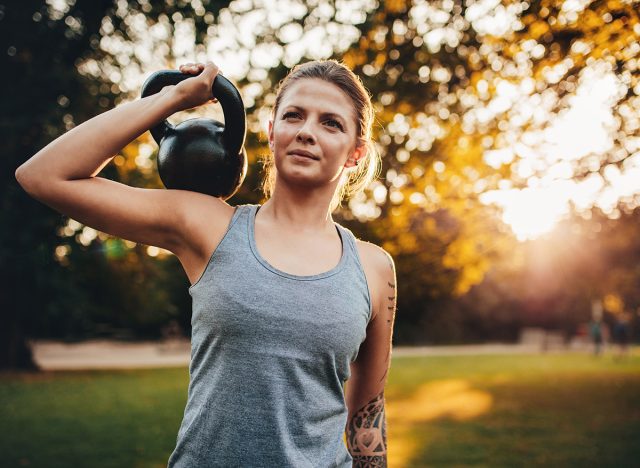
The benefits of strength training go beyond fat burning and weight loss. "As your muscle mass increases, so does your metabolism, which is key to burning calories," according to the University of Maryland Medical System. "Our resting metabolism is based upon our fat-free mass, most of which is muscle."
RELATED: 10 Home Exercises to Target Belly Fat
Eat Plenty of Protein
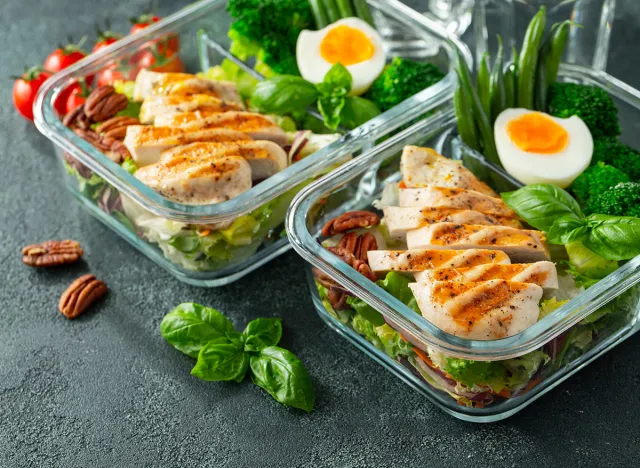
Protein helps you feel full and is important for building muscle. "Your body does a way better job at metabolizing protein when it's consumed 15-30 grams at a time," registered dietician and certified diabetes care and education specialist Donna Matt tells UnityPoint Health. "Studies show a higher intake of protein, like more than 40 grams in one sitting, isn't more beneficial. Most of us tend to eat all our protein at one meal but try 20 grams at breakfast and then divide the rest between lunch and dinner."
Eat the Matrix
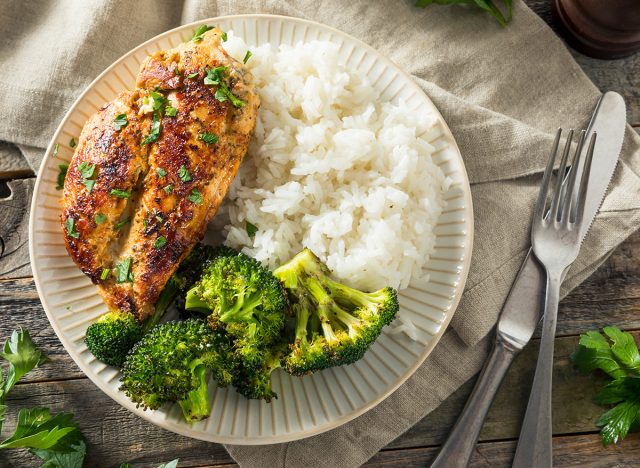
Mix up your carbs and protein with each meal. "In addition to adding protein to each meal, I recommend eating a matrix of nutrients," Matt says. "For example, eating a single carbohydrate — like a piece of fruit — gets in your bloodstream quickly and increases blood sugar levels and appetite. When there's multiple nutrients in your snack or meal, such as a carb with a fat or a protein with a carb, they slow down how fast the carbohydrates get in your bloodstream."
RELATED: 15 Best Vegetables and Fruits to Build Muscles
Get Your Cardio
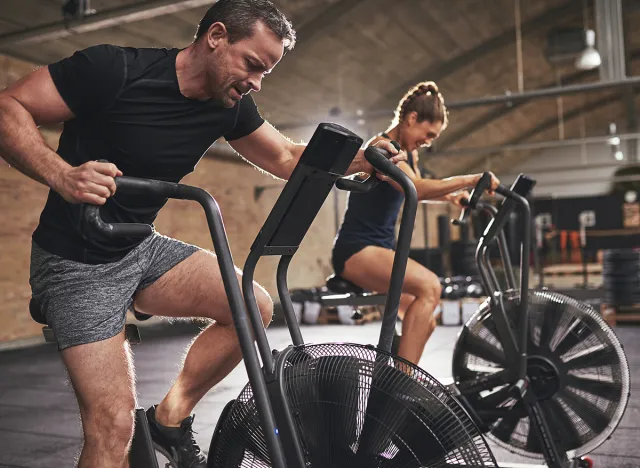
Cardio exercises are highly effective at torching calories. "Cardio's role in helping you shed pounds is burning calories," says Beaumont Health. "The more you exercise, the more calories you'll burn. If you're trying to lose weight, you should aim for doing cardio at least five days per week for a total of at least 250 minutes (4 hours, 10 minutes) each week."
RELATED: 10 Home Exercises to Target Belly Fat
Try Meditating

Any sort of stress management—meditating, working out, prayer, spending time in nature—is beneficial for health and weight loss. "Women deal with all kinds of stress-related health problems," Celine Riera, PhD, tells Cedars-Sinai. "It's amazing to see how much higher stress can be in women compared to men. Research on women's specific stress and adaptation to chronic stress has been overlooked, and we need to generate proper models to solve these questions."
RELATED: 50 Subtle Signs You May be Sick.
Prep Your Meals
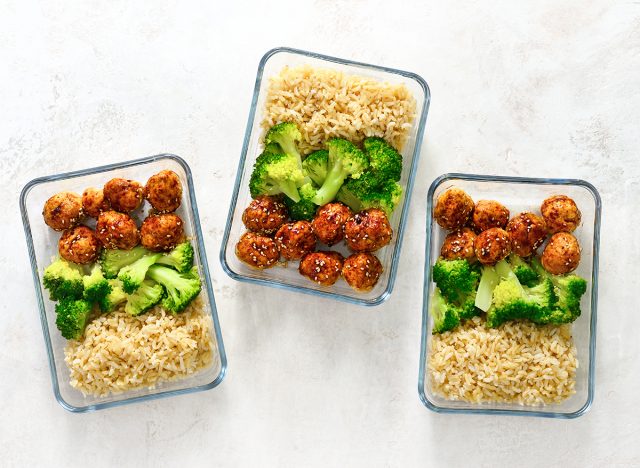
Meal prepping is a great way to keep your diet on track. "Meal prepping is a great way to save yourself both time and money, and it goes a long way toward reducing the stress of not knowing what to eat," registered dietitian Elyse Homan, MS, RD, LD, tells the Cleveland Clinic. "You can quickly make multiple days' worth of food and then not worry about meals the rest of the week."
💪🔥Body Booster: Let these habits become a blueprint for an active, healthy lifestyle.




